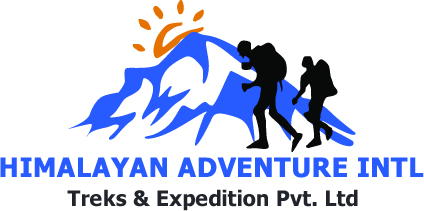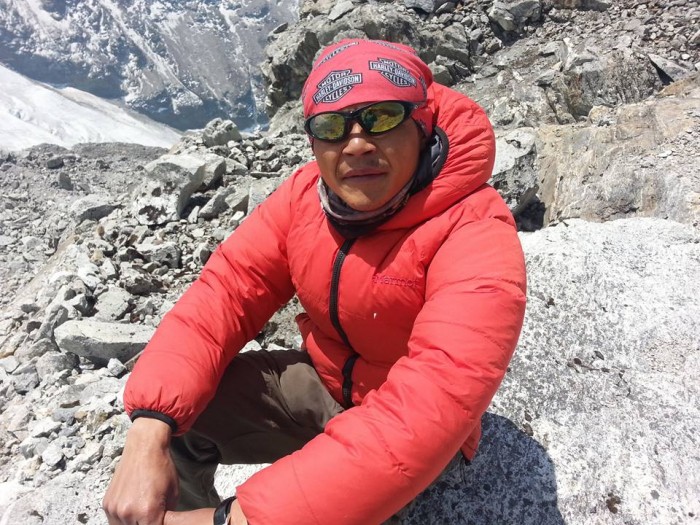Tucked away in the remote northeastern corner of Nepal, the Kanchenjunga Base Camp Trek is one of the least explored yet most rewarding trekking adventures in the Himalayas. This region is home to Mt. Kanchenjunga (8,586 meters), the third highest mountain in the world. The trek offers a unique blend of pristine wilderness, rich Limbu and Rai cultures, high alpine terrain, and dramatic glacier valleys.
The Kanchenjunga Circuit Trek is an ideal route for trekkers looking to experience both the Kanchenjunga North Base Camp Trek and Kanchenjunga South Base Camp, making it a complete journey around the base of the giant peak. Operated by expert local operators like Himalayan Adventure International Treks, this trek guarantees an immersive Himalayan experience far from the commercial trails of Everest and Annapurna.
Why Choose the Kanchenjunga Base Camp Trek?
Unlike the popular trails of the Manaslu Circuit Trek or Annapurna Base Camp (ABC) trek, the Kanchenjunga Base Camp Trek remains isolated, offering solitude and serenity in untouched terrain. It’s ideal for those who seek raw natural beauty and cultural authenticity.
Highlights Include:
-
Panoramic views of Mt. Kanchenjunga, Janu, Kabru, and more
-
Crossing high mountain passes with dramatic glacier scenery
-
Visits to traditional Rai and Limbu villages
-
Remote camping experiences in alpine landscapes
-
Rare flora and fauna including the elusive red panda
Kanchenjunga Base Camp Trek Itinerary
While itineraries can be customized by trekking agencies like Himalayan Adventure International Treks, a standard Kanchenjunga Circuit Trek itinerary spans 21–24 days.
Sample 24-Day Itinerary:
Day 1–2: Arrival in Kathmandu & Fly to Bhadrapur
Day 3–4: Trek from Taplejung to Sekathum via Mitlung and Chirwa
Day 5–8: Ascend to Ghunsa, acclimatization day included
Day 9–11: Trek to Kanchenjunga North Base Camp (Pangpema - 5,143m)
Day 12–14: Return to Ghunsa and cross Sele La Pass
Day 15–17: Descend to Tseram and trek to Kanchenjunga South Base Camp (Oktang - 4,730m)
Day 18–20: Trek back through Tortong to Yamphudin
Day 21: Drive to Birtamod
Day 22: Fly back to Kathmandu
This itinerary covers both the Kanchenjunga North Base Camp Trek and the southern base camp, completing the classic Kanchenjunga Circuit Trek.
Kanchenjunga Base Camp Trek Map
Having a detailed Kanchenjunga Base Camp Trek map is essential for visualizing the terrain. The Kanchenjunga Circuit Trek map covers rugged trails, river crossings, high passes, and base camps. Maps highlight key stops like Ghunsa, Lhonak, Pangpema (North Base Camp), Sele La Pass, Tseram, and Oktang (South Base Camp).
For reference, maps can be purchased in Kathmandu or provided by reputed operators like Himalayan Adventure International Treks along with digital versions.
Kanchenjunga Base Camp Height and Terrain
The Kanchenjunga base camp height varies depending on the side you visit:
-
North Base Camp (Pangpema): Approx. 5,143 meters
-
South Base Camp (Oktang): Approx. 4,730 meters
The trek involves ascending steep ridges, walking along riverbanks, and crossing glacial moraines, so physical fitness and proper acclimatization are vital.
Is Kanchenjunga Base Camp Trek Difficult?
Yes, the Kanchenjunga Trek difficulty is considered strenuous. The trek involves long days, high altitude, and remote trails with limited infrastructure.
Factors influencing difficulty:
-
Altitude exceeding 5,000m
-
Lack of teahouses in remote areas (camping may be necessary)
-
River crossings and rugged paths
-
Minimal rescue options due to remoteness
Yet, with the support of a professional Kanchenjunga trek guide, the trek becomes manageable even for seasoned trekkers.
Kanchenjunga Short Trek – Is It Possible?
A full Kanchenjunga Circuit Trek takes over 3 weeks, but those short on time can opt for the Kanchenjunga Short Trek. You can choose just the North or South Base Camp and return the same way instead of making the full circuit.
Suggested Short Trek Itineraries:
Though shorter, these treks still offer majestic Himalayan views and cultural encounters.
Kanchenjunga Trek Reviews
According to many Kanchenjunga Base Camp Trek reviews, trekkers describe this journey as one of Nepal’s most authentic and rewarding treks. Travelers often mention:
-
The lack of crowds compared to Everest or Annapurna
-
The raw, untouched beauty of landscapes
-
The friendliness of local Limbu and Rai communities
-
The thrill of reaching remote base camps with towering peaks in sight
Himalayan Adventure International Treks consistently receives praise for providing expert guides, logistics, and safety on this demanding trek.
Kanchenjunga Trek Guide – Why You Need One
Hiring an experienced Kanchenjunga trek guide is essential, especially since the region falls under a restricted area requiring a special permit and at least two trekkers accompanied by a licensed guide.
Your guide will:
-
Navigate remote trails
-
Arrange permits and documentation
-
Communicate with locals in native dialects
-
Ensure your safety and health at altitude
-
Share deep knowledge of local culture and geography
Himalayan Adventure International Treks offers seasoned guides with years of experience in the Kanchenjunga region.
Kanchenjunga Base Camp Trek Cost
How Much Does It Cost to Trek Kanchenjunga?
The Kanchenjunga Base Camp trek cost depends on the itinerary, group size, and services included. On average:
-
For foreign trekkers: USD $1,700–$2,500
-
Kanchenjunga Base Camp trek cost for Nepali: NPR 70,000–120,000 (inclusive of permits, food, transport, and guide)
What is the Cost of Kanchenjunga Base Camp Trek in Rupees?
For domestic trekkers:
-
Approx. Rs. 1,00,000–1,50,000 for a guided package covering transport, accommodation, food, and permits
International rates:
How Much Does Trekking Cost Compared to Other Treks?
When comparing with other treks:
-
Manaslu Circuit Trek price: USD $1,500–$2,500
-
Cost for ABC trek: USD $600–$900
The Kanchenjunga trek is costlier due to its remoteness, longer duration, and the need for special permits and guides.
Kanchenjunga Trek Permits
Since this area borders India and Tibet, it's a restricted region requiring:
Trekkers must be in a group of two or more with a registered guide via a licensed agency like Himalayan Adventure International Treks.
Kanchenjunga Trek Map and Sikkim Connection
The Kanchenjunga massif also spans into Sikkim, India. While trekking from Sikkim is popular among Indian trekkers, Nepal’s side offers better base camp access.
The Kanchenjunga trek Sikkim options include Dzongri and Goechala Treks but do not reach the main base camps like Nepal’s Pangpema and Oktang.
Hence, if your goal is to trek to Kanchenjunga Base Camp, Nepal is the definitive choice.
How Long is Kanchenjunga Base Camp Trek?
How Much to Climb Kanchenjunga?
Climbing the summit of Kanchenjunga (8,586m) is a major mountaineering expedition requiring significant skill and cost:
-
Climbing cost: USD $20,000–$25,000 per person (includes permit, Sherpa support, oxygen, insurance, etc.)
-
What is the price to climb Kanchenjunga? Approx. Rs. 25–35 lakhs
This is vastly different from the Kanchenjunga Base Camp trek, which is trekking-level, not climbing.
Best Time to Trek Kanchenjunga Base Camp
-
Spring (March–May): Rhododendrons bloom, clear mountain views
-
Autumn (September–November): Stable weather, vibrant local festivals
-
Winter: Snow-covered trails, limited access
-
Monsoon: Avoid due to landslides and poor visibility
Why Trek with Himalayan Adventure International Treks?
Himalayan Adventure International Treks is a local expert with deep roots in remote Himalayan trekking. Their guides, support teams, and logistics ensure a safe, enriching experience.
They Offer:
-
Fully customizable itineraries
-
Government-licensed local guides
-
All-inclusive packages (permits, meals, accommodation)
-
Affordable group and private options
-
Emergency support and safety protocols
A Journey Worth Every Step
The Kanchenjunga Base Camp Trek is a trekker’s paradise that combines untouched wilderness, local culture, and panoramic Himalayan views. Whether you opt for the Kanchenjunga North Base Camp Trek, Kanchenjunga short trek, or the complete Kanchenjunga Circuit Trek, the journey is guaranteed to leave a lifelong impression.
With expert guidance from Himalayan Adventure International Treks, you can experience this hidden jewel of Nepal in safety, comfort, and authenticity.

 Plan Your Trip Now
Plan Your Trip Now 


